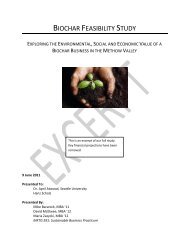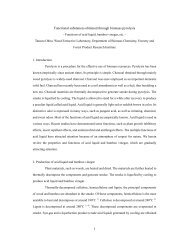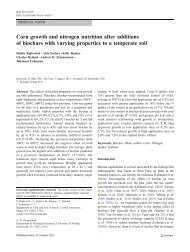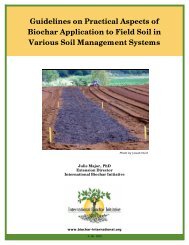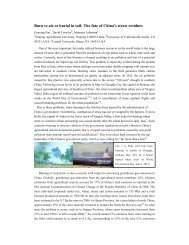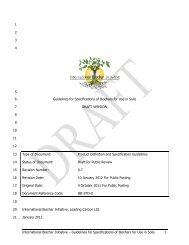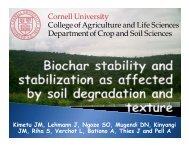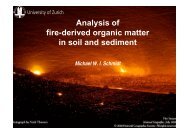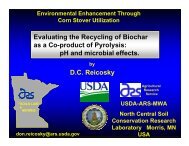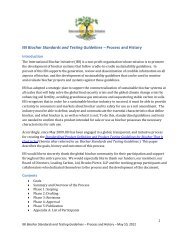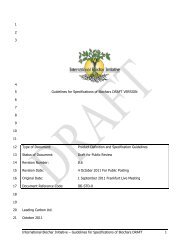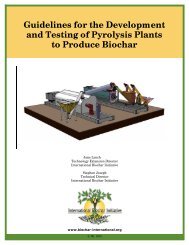Standardized Product Definition and Product Testing Guidelines for ...
Standardized Product Definition and Product Testing Guidelines for ...
Standardized Product Definition and Product Testing Guidelines for ...
You also want an ePaper? Increase the reach of your titles
YUMPU automatically turns print PDFs into web optimized ePapers that Google loves.
1<br />
2<br />
3<br />
4<br />
5<br />
TMECC – Test Methods <strong>for</strong> the Examining of Composting <strong>and</strong> Compost, from US Composting<br />
Council <strong>and</strong> USDA<br />
USDA – United States Department of Agriculture<br />
USGS – United States Geological Service<br />
µg – microgram<br />
6<br />
7<br />
8<br />
9<br />
10<br />
11<br />
12<br />
13<br />
14<br />
15<br />
16<br />
17<br />
18<br />
19<br />
20<br />
21<br />
22<br />
23<br />
24<br />
25<br />
26<br />
27<br />
28<br />
29<br />
30<br />
31<br />
32<br />
33<br />
34<br />
<strong>Definition</strong> of Terms<br />
Note: Terms <strong>and</strong> definitions have been adapted from the references given. Terms <strong>and</strong><br />
definitions created specifically <strong>for</strong> this document are referenced as “IBI”.<br />
Ash: The inorganic matter, or mineral residue of total solids, that remains when a sample is<br />
combusted in the presence of excess air. (US Compost Council <strong>and</strong> US Department of<br />
Agriculture, 2001)<br />
Biochar: A solid material obtained from thermochemical conversion of biomass in an oxygenlimited<br />
environment. (IBI, 2012)<br />
Biochar Characteristics: For the purposes of these guidelines, biochar characteristics are those<br />
physical or chemical properties of biochar that affect the following uses <strong>for</strong> biochar: 1) biochar<br />
that is added to soils with the intention to improve soil functions; <strong>and</strong> 2) biochar that is<br />
produced in order to reduce emissions from biomass that would otherwise naturally degrade to<br />
GHG, by converting a portion of that biomass into a stable carbon fraction that has carbon<br />
sequestration value. (IBI, 2012)<br />
Biological Material: Material derived from, or produced by, living or recently living organisms.<br />
This material can be ”unprocessed” or ”processed”. Unprocessed biological material is living<br />
material, or recently living material from the plant kingdom (or other non-animal taxa such as<br />
fungi or algae) that may have been mechanically resized (such as wood chips), but has not<br />
been processed in an animal’s body or gone through an anthropogenic chemical modification.<br />
Processed biological material is recently living material that has been chemically modified by<br />
anthropogenic or biological processes (e.g., paper sludge, manure). All animal products,<br />
including bones, offal, food-waste containing animal products, <strong>and</strong> animal manures are<br />
considered to be processed biological material. (IBI, 2012)<br />
Biomass: The biodegradable fraction of products, waste <strong>and</strong> residues of biological origin from<br />
agriculture (including vegetal <strong>and</strong> animal substances), <strong>for</strong>estry, <strong>and</strong> related industries including<br />
fisheries <strong>and</strong> aquaculture, as well as the biodegradable fraction of industrial <strong>and</strong> municipal<br />
waste (including municipal solid waste). (European Commission Agriculture <strong>and</strong> Rural<br />
Development, 2010)<br />
<strong>St<strong>and</strong>ardized</strong> <strong>Product</strong> <strong>Definition</strong> <strong>and</strong> <strong>Product</strong> <strong>Testing</strong> <strong>Guidelines</strong> <strong>for</strong> Biochar That Is Used in Soil 38



